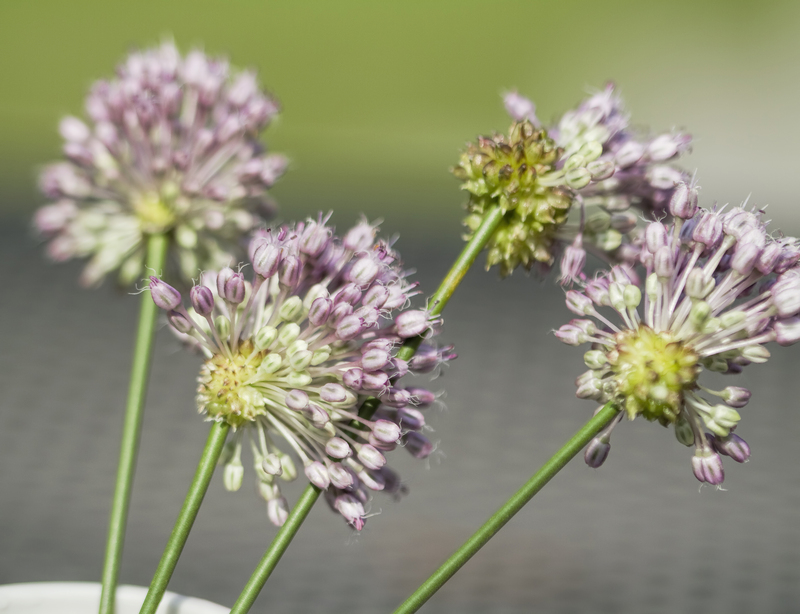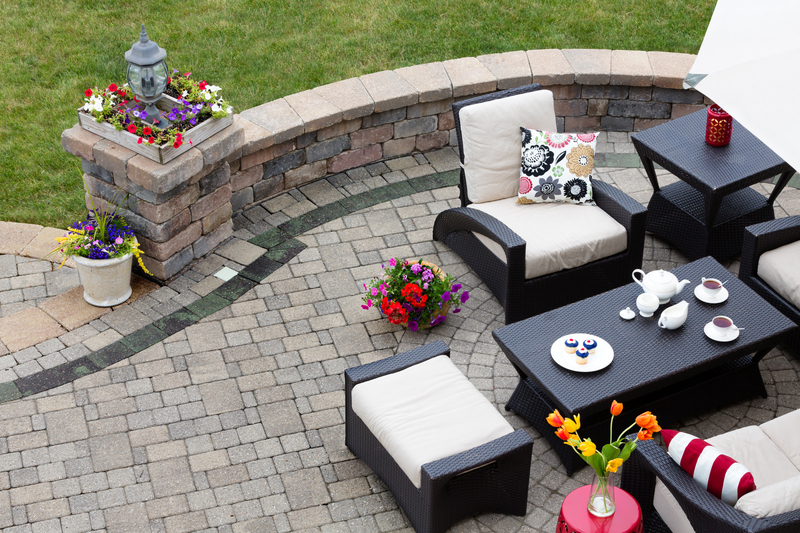Container Gardening: Innovative Greenery Solutions
Posted on 22/08/2025
Container Gardening: Innovative Greenery Solutions
Container gardening is transforming the way we experience and cultivate plants. With urban spaces shrinking and the world becoming more eco-conscious, innovative greenery solutions have never been more relevant. This form of gardening offers flexibility, creativity, and the ability to bring nature to virtually any environment--be it balconies, rooftops, patios, or even indoor spaces.
What is Container Gardening?
Container gardening involves growing plants in pots, tubs, boxes, hanging baskets, or virtually any vessel that can hold soil and plants. Unlike traditional gardening, it doesn't require a yard or ground plot, making it ideal for *urban dwellers*, small-space gardens, and people with physical challenges.
- Flexible Placement: Moveable containers allow you to change your garden's design and maximize sunlight.
- Space-Saving: Containers fit neatly on windowsills, porches, and even staircases.
- Accessibility: Ideal for those with mobility limitations as containers can be elevated.
- Design Variety: Creative freedom with container types, colors, and arrangements.
Key Advantages of Container Planting
Embracing gardening in containers comes with a host of advantages:
- Enhanced Soil Control: Easily monitor and improve soil quality and drainage.
- Greater Pest and Disease Management: Isolate afflicted plants and manage infestations more effectively.
- Year-Round Planting Possibility: Protect and nurture non-hardy or tropical plants in colder climates.
- Easy Redecoration: Shift containers for new layouts or reinvigorate indoor spaces seasonally.

Popular Container Garden Ideas & Innovative Greenery Solutions
Modern gardening enthusiasts are exploring creative, innovative solutions to make the most of limited space. Here are some renowned trends and practical ideas:
1. Vertical Container Gardens
Urban gardeners are turning to the vertical plane for space efficiency and dramatic aesthetics. Wall-mounted pockets, trellised vine planters, and stacked pots breathe life into previously unused space.
- Wall Planters: Attach to fences or exterior/interior walls for a living art piece.
- Pocket Panels: Felt or fabric pouches create organized rows for culinary herbs, strawberries, or flowers.
- Pallet Gardens: Upcycle wooden pallets into multi-tiered container gardens.
2. Self-Watering and Smart Containers
Self-watering planters boast water reservoirs that reduce maintenance and promote root health. Even more innovative, *smart containers* feature built-in sensors for moisture, light, and nutrient management--some even send smartphone alerts for plant care!
3. Upcycled and Eco-Friendly Containers
Sustainability is at the heart of today's gardening trends. Reusing old household items--like boots, teapots, and crates--adds character and keeps waste out of landfills.
- Old tires painted and stacked for playful flower beds.
- Repurposed buckets and cans for rustic herb gardens.
- Vintage furniture turned into eye-catching planters.
4. Indoor Container Gardening Solutions
No backyard? No problem! Houseplants, microgreens, edible herbs, and compact dwarf fruit trees flourish on windowsills or under grow lights. Indoor container garden setups make fresh greenery accessible year-round.
- Hydroponic Countertop Gardens: Grow herbs without soil for a mess-free kitchen.
- Self-Contained Terrariums: Low-maintenance and visually stunning plant ecosystems.
- Hanging Baskets: Maximize vertical space with trailing plants like pothos and spider plants.
Design Principles for Stunning Container Gardens
To create visually striking container gardens, follow these time-tested design fundamentals:
Thriller, Filler, Spiller Technique
- Thriller: The dramatic centerpiece or tallest plant (e.g., canna, ornamental grass).
- Filler: Medium-height, lush plants that fill the area (e.g., coleus, begonias).
- Spiller: Trailing species that cascade over the container's edge (e.g., sweet potato vine, ivy).
Color and Texture Coordination
Combine contrasting textures, leaf shapes, and bloom colors to ensure visual interest throughout the growing season. Pair silvery foliage with deep greens or bold blooms with subtle grasses for maximum effect.
Container Arrangement Tips
- Group containers of different heights and widths for a layered look.
- Mix materials: Juxtapose ceramics, metals, and timbers for eclectic charm.
- Seasonal Swaps: Replace annuals or rotate containers for year-round appeal.
Container Selection: Choosing the Right Pot
Selecting the ideal vessel is as important for container gardening success as plant choice. Here's what to consider:
- Size: Adequate space for mature roots avoids overcrowding and stunted growth.
- Material: Terracotta, resin, metal, and plastic all have unique visual and moisture retention properties.
- Drainage: Drainage holes prevent rot and root diseases; add a saucer for indoor use.
- Weight: Lightweight containers are easier to move, especially on balconies or rooftops.
Eco-Friendly Container Options
- Biodegradable pots (coconut coir, rice husks) decompose naturally.
- Upcycled vessels support sustainability and individual style.
- Self-watering containers conserve water.
Best Plants for Container Gardening
Not all plants are created equal when it comes to thriving in containers. Here are some top-rated species for every container enthusiast:
Edible Plants
- Herbs: Basil, parsley, mint, thyme, oregano
- Vegetables: Tomatoes, lettuce, peppers, eggplants, radishes
- Fruit: Strawberries, dwarf citrus, blueberries
Ornamental and Flowering Plants
- Annuals: Petunias, marigolds, pansies, impatiens
- Perennials: Hostas, ferns, coral bells
- Bulbs: Tulips, daffodils, lilies for seasonal color
Indoor Container Plants
- Low-light: Snake plant, ZZ plant, pothos
- Bright light: Jade, succulents, aloe vera
- Air-purifying: Spider plant, peace lily, Boston fern
Essential Care Tips for Container Gardening
Healthy, thriving *container plantings* require some specialized care:
- Regular Watering: Containers dry out faster than garden soil--check moisture levels daily in hot weather.
- Fertilization: Use slow-release or liquid fertilizer to replenish depleted nutrients.
- Pruning and Deadheading: Trim faded blooms to encourage continued growth.
- Repotting: Refresh soil or move to larger pots as roots outgrow containers.
- Pest Management: Inspect for pests; use neem oil or insecticidal soap as needed.
Innovative Greenery Solutions for Specific Challenges
Container gardening innovation allows you to address unique challenges with simple strategies:
Container Gardening for Small Spaces
- Rail Planters: Attach pots to balcony or deck rails for an instant vertical boost.
- Tiered Stands: Multiple shelves increase planting area while saving space.
- Hanging Gardens: Suspend pots from ceilings or pergolas for airiness.
Solutions for Hot Climates
- Opt for light-colored or reflective pots to prevent soil overheating.
- Group containers for mutual shading.
- Mulch the surface to retain moisture.
Urban Container Gardening
- Choose plants tolerant of city conditions like pollution and limited light.
- Utilize noise-blocking and privacy-enhancing tall plants in strategic placements.
- Use mobile planters on casters for flexible design.
Eco-Friendly and Sustainable Practices
Modern container gardening practices prioritize sustainability:
- Organic Soil Mixes: Avoid peat moss in favor of coconut coir or compost blends.
- Water Conservation: Use rain barrels and self-watering systems.
- Pollinator Plants: Include nectar-rich flowers to attract bees and butterflies.
- Native Species: Lower water usage and reduce pest issues by planting region-appropriate greenery.

Frequently Asked Questions About Container Gardening
How often should I water my container plants?
Water needs depend on plant type, container material, and weather. Most containers require daily summer watering, but always test the soil an inch down first.
Which soil is best for container gardens?
Use a high-quality potting mix rather than garden soil. Potting mixes ensure drainage, aeration, and consistent moisture retention.
Can I reuse container soil each year?
It's best to refresh your container soil annually. Remove spent roots, incorporate compost, and consider replacing if the mix has become compacted or depleted.
Are there any vegetables that don't grow well in pots?
Large root crops like potatoes, corn, and sprawling squash can struggle due to space requirements, but compact varieties or mini-plants are available for containers.
Conclusion: The Future of Green Spaces with Container Gardening
Container gardening represents a revolution in urban greening and home landscaping. No matter your living situation, you can transform small spaces into vibrant oases with the help of innovative techniques and sustainable choices.
By experimenting with self-watering systems, upcycled planters, and *vertical solutions*, you unlock a new dimension of gardening. Whether you seek to grow your food, beautify your balcony, or purify your indoor air, container gardening is the ultimate versatile answer.
Embrace these innovative container gardening ideas--and let your creativity flourish alongside your plants. With just a few pots and a bit of ingenuity, you can green your corner of the world, one container at a time.
- Ready to start? Gather your pots, pick your plants, and create your dream container garden today!

